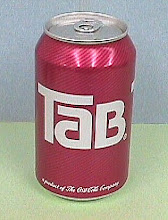Although Fifty Shades of Grey is supposed to be Twilight fan fiction, the similarities between the erotic tale and Pretty Woman are striking.
In
both stories, a man and woman are united by a contract; the man tries to
transform the woman by drawing her into his world, while the woman sets about
softening the sharp edges of the cold-hearted millionaire.
He
lavishes her with gifts, including fancy clothes, nice meals, rides on private
planes and/or helicopters. Sexy baths ensue, but it’s not enough. She leaves
because she wants more than what he has to offer — except that he ultimately
wins her over.
Coincidence?
Original post:
Did you know that Pretty Woman is now 25 years old? If you're at all plugged into pop culture you could hardly not, because retrospectives have been everywhere this week. The article I enjoyed the most is at Talking Points Memo, which is usually a political blog. Today they've got a two-part "cultural history" of the movie and it's fascinating. The first part, "How Pretty Woman Became A Classic" is not that different from many other articles about the film. It was originally a lot darker, with no happy ending; Disney and director Garry Marshall softened it down and romanced it up, turning it into a romcom; Julia Roberts steals the show and becomes a star, etc. No big news there.
Much more fun is the second half, titled "Pretty Style, A Fashion Analysis." It was written, interestingly, by two men, Tom Fitzgerald and Lorenzo Marquez, and it starts with this:
Pretty
Woman may
be known for its rags-to-riches romance and launching Julia Roberts’ career,
but there’s another aspect that’s proved to be just as influential: the
costumes by Marilyn Vance. Not only do they continue to influence fashion to
this day, they also tell a story of class boundaries, emotional repression and
gender expectations, through the use of color (or lack thereof), the skill of
accessorizing, and the deployment of menswear detailing to evoke power or
self-actualization.
No, really.
Read it here, then go watch the movie again. You'll never look at black lace, white gloves and yes, thigh-high boots the same way again.
Read it here, then go watch the movie again. You'll never look at black lace, white gloves and yes, thigh-high boots the same way again.


No comments:
Post a Comment